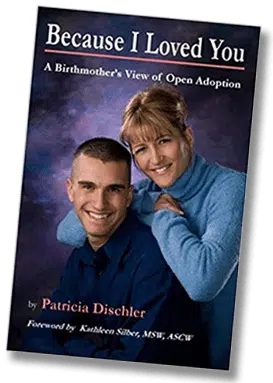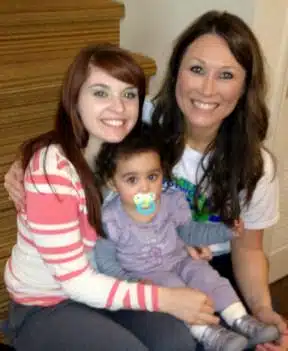
A successful open adoption depends on two key factors: effective communication and honesty. Open adoption communication forms the foundation for building trust and understanding between families. If both the adoptive parents and birth parents follow these two rules, they’ll have laid the foundation for success.
The best possible open adoptions occur when both sets of parents respect each other, act within their post-adoption contact agreement, and maintain open and healthy communication. By doing so, everyone will have a plan of how to overcome challenges and difficult times together.
These seven tips can make an open adoption experience more successful, with open adoption communication being key to building lasting, meaningful relationships.
Table of Contents
- Plan and Prepare
- Address Common Fears and Concerns
- Set Healthy Boundaries
- Seek Support From Your Adoption Professional
- Communicate
- Stay Flexible
- Focus on the Child
- Open Adoption Communication: Creating a Legacy of Love
- Plan and Prepare
Make sure to set up expectations for future open adoption communication before the child is born. An open adoption works the best if, before the child’s birth, the adoptive family and birth family make plans for how they will communicate after the adoption. Can the birth mother initiate a phone call? Should she text or email? Can they do a FaceTime meeting? Setting these expectations reduces communication chaos that can occur after the baby is born.
Share what you hope your open adoption will look like, and be honest with both yourself and all the parties involved. Take the time to envision what open adoption communication will look like for you. Look at the long-term view, and discuss what you hope the next 18 years will look like. Being honest will allow you to get out your “non-negotiables” and initial hopes for the relationship. You may find that the other set of parents has a different vision and hope for that relationship. Talking about these differences early on will significantly improve your open adoption relationship.
- Address Common Fears and Concerns
Once you’ve established your initial plans and expectations, it’s important to acknowledge that having concerns about open adoption relationships is completely normal.
Many adoptive families worry about how a relationship with their child’s birth family will impact their bond with their child, and these fears are valid parts of the adoption journey. They often find their initial fears were unfounded.
As one adoptive mother, Cassidy, shared: “I think I ignorantly assumed that any relationship with my son’s birth mother might damage or confuse my mothering. But now, I know that these are people who are part of Elijah’s story and genuinely love him. I don’t feel like any less of a mother with his birth mother in the equation.”
Understanding Birth Mothers’ Perspectives
It’s crucial to understand that birth mothers have no desire to overshadow the role of their child’s adoptive parents. Adoptive parents often feel that they will be judged or treated as second-class parents because they are not genetically related to their child. This is a real fear, but birth mothers choose to place their child when love is all they have to offer. They want to see their child in a home that provides everything they couldn’t and also loves the child as much as they do.
Research supports the benefits of open adoption communication. Studies show that adoptive parents were more satisfied when there was more contact and communication with the birth mother, indicating that these relationships actually strengthen rather than threaten family bonds.
Once birth mothers see how much the adoptive parents love their child, they are overcome with a sense of peace and often become very protective of the adoptive family’s relationship with the child. When you look at the beauty of adoption, you can’t help but have compassion and respect for birth mothers. They had other choices in their pregnancy, and they chose to place their child for adoption out of love.
A Story of Success
Patricia Dischler, author of Because I Loved You, shares a touching example of how these relationships can flourish. After 12 years of exchanging photos and letters through their agency, Patricia and her son Joe’s adoptive family finally met face-to-face. During their first meeting at Patricia’s parents’ house, her father pulled out a dulcimer, and Joe’s eyes lit up. He ran to the car and returned with his guitar.
His adoptive parents laughed, recognizing that Joe had inherited his love of music from his birth family. The family spent a beautiful afternoon playing music together. At one point, Joe’s adoptive dad put his arm around Patricia’s shoulder and said to her, “look, a little boy making music with his Papa. How could anybody think that this is wrong?”
This moment illustrates something profound: a child’s genetic background includes talents, physical characteristics, and personality traits inherited from their biological parents. Having access to this information helps adoptees understand where they came from, giving them a stronger sense of self as they grow up.
Everyone Loves the Same Child
Remember that every person in both the biological and adoptive family is there out of love for the child. Birth mothers love the same child that you do, and you can never have too many people who love your child. When you approach open adoption with this understanding, those initial fears often transform into appreciation for the additional support and love your child will receive.
With these perspectives in mind, you can move forward with greater confidence in establishing the healthy boundaries that will support your growing family.
- Set Healthy Boundaries
Setting boundaries ensures that the best interests of the child are kept in mind and that there is mutual respect between the birth parents and adoptive parents. An important boundary to keep in mind is parenting philosophies.
Open adoption isn’t co-parenting; the adoptive parents are responsible for caring for their child by setting boundaries they think are best for the child. The adoptive parents are the child’s legal parents, and so they’re responsible for his or her well-being and upbringing. They’re the ones who will be there in the good times and bad, for every big and small moment of the child’s life.Defining Your Role as Parents
It’s essential to establish early on that while birth parents remain important figures in your child’s life, the adoptive parents make the day-to-day decisions about parenting. These decisions include everything from discipline methods and educational choices to medical decisions and daily routines. Having clarity about these roles prevents confusion and potential conflict down the road.
Respecting Different Perspectives
While you maintain your parenting authority, it’s important to approach differences in opinion with respect and understanding. Birth parents may have different views on certain topics, and while you don’t need to agree with them, acknowledging their feelings shows maturity and consideration for the relationship.
Boundaries Around Contact
Clear boundaries about when, how, and how often contact occurs help everyone feel secure. These boundaries might include agreed-upon times for phone calls or guidelines about social media interactions. These boundaries aren’t meant to be restrictive but rather to create a framework that works for everyone involved.
- Seek Support From Your Adoption Professional
If you encounter a roadblock in your open adoption, be sure to contact your agency for assistance. Many adoption agencies provide both pre-and post-adoption support. Open adoption can work well when adoption agencies offer these services for birth parents and adoptive parents.
The Value of Professional Guidance
Adoption professionals have experience navigating the complexities of open adoption relationships. They can provide a neutral perspective when conflicts arise and offer practical solutions based on what they’ve seen work for other families. Don’t hesitate to lean on their expertise, especially during transitional periods.
Ongoing Support Services
Many agencies offer support groups, counseling services, and educational workshops specifically designed for adoptive families. These resources can be invaluable as your child grows and your relationship with the birth family evolves. Consider participating in these programs even when things are going well, as they provide tools for handling future challenges.
Mediating Difficult Conversations
Having a neutral third party facilitate conversations can be incredibly helpful. Your adoption professional can serve as a mediator when difficult topics arise or when communication breaks down. This support can prevent minor issues from becoming larger problems that could impact your child.
Lifetime Adoption has been helping adoptive parents and birth parents navigate open adoptions since 1986, building bonds that benefit everyone, especially the child.
- Communicate
Make keeping open lines of communication a priority. A healthy relationship between the adoptive parents and the birth parents has numerous benefits. It helps adoptive parents have a more positive attitude about their child’s birth parents and gives birth parents the comfort of knowing their child is thriving.
Being Honest From the Start
As an adoptive parent, avoid making promises you won’t be able to keep. While it may seem best to let the birth parents lead the way in the months before your baby’s birth, it will be more challenging in the long run if you don’t communicate your hopes and limitations clearly.
If either set of parents has something to say, the best time to say it is at the beginning of your match. Discussion early on can help you avoid miscommunication in the future and allow you to start your relationship on the same page, with knowledge of each other’s open adoption expectations.
Regular Check-ins
Establish a routine for regular communication, even when there’s nothing specific to discuss. This routine might look like monthly phone calls, quarterly emails with updates, or annual visits. Regular contact prevents the relationship from becoming awkward or strained due to long periods of silence.
Sharing Your Child’s Growth
Birth parents often find great comfort in knowing how their child is developing. Sharing milestones, photos, and stories about your child’s personality helps maintain the connection and provides reassurance that their decision was the right one. This ongoing communication also gives your child a continuous narrative about their story.
Addressing Difficult Topics
Open adoption communication isn’t always easy, and there will be times when difficult conversations are necessary. Approach these moments with empathy and patience. Remember that everyone’s emotions and perspectives may evolve over time, and what worked in the past may need adjustment.
- Stay Flexible
The birth parents or adoptive parents may need to scale back or expand the level of openness. This can be included in the agreement within reason. Don’t level things either, but give some allowance for growth for both sides.
Adapting to Life Changes
Adoptions can change; relationships come and go, circumstances are in flux, and people move. Life events such as marriages, divorces, job changes, or additional children can impact everyone’s availability and comfort level with contact. To handle these changes with care, establish a base of open communication and complete honesty.
Understanding Changing Needs
Your child’s needs and interests regarding their birth family may change as they grow older. A toddler has different needs than a teenager, and your open adoption relationship should be able to adapt accordingly. Some children may want more contact during certain developmental stages, while others may need space.
Navigating Emotional Seasons
There may be times when birth parents need to step back due to emotional challenges, or when adoptive parents need to adjust boundaries due to family circumstances. Flexibility doesn’t mean having no structure, but instead being willing to modify agreements when life requires it.
Planning for the Long Term
In the beginning of an adoption, many want to “play nice” and make sure that no one is hurt. While this is common, it is important to remain honest, open, and willing to compromise for the child’s sake. Remember that open adoption is a lifelong journey, and what works in the early years may need evolution as everyone grows and changes.
- Focus on the Child
Open adoptions are most successful when the birth parents and adoptive families seek to do everything for the good of the child. This must be the underlying reason that guides every decision during the adoption process. If all can place the child’s needs at the very front of every decision, their families and relationships will be much stronger.
Understanding Your Child’s Identity Needs
Children from open adoptions often have a stronger sense of identity because they have access to information about their origins. They understand not just their medical history, but also their cultural background, family traditions, and genetic traits. This knowledge helps them feel complete and confident in who they are.
Age-Appropriate Conversations
As your child grows, they’ll have questions about their adoption and birth family. Having an ongoing relationship makes these conversations more natural and less mysterious. You can share real stories and current information rather than trying to piece together fragments from the past.
Modeling Healthy Relationships
When you maintain a respectful, caring relationship with your child’s birth family, you’re teaching your child valuable lessons about love, forgiveness, and the complexity of human relationships. You’re showing them that love comes in many forms and that their story is something to be proud of.
Supporting Your Child’s Choices
As your child matures, they may want more or less contact with their birth family. Supporting their preferences, while providing guidance and boundaries appropriate for their age, helps them develop autonomy and confidence in their relationships.
Open Adoption Communication: Creating a Legacy of Love
By following these seven tips, you can set yourself up for successful open adoption communication. When you approach an open adoption with respect for each other and love for the adoptee, you create a legacy that extends far beyond the adoption itself. You’re building a foundation of love and support that will benefit your child throughout their entire life.
Editor’s Note: This article was originally published on January 12, 2022, and has since been updated.
Founder of Lifetime Adoption, adoptive mom, adoption expert, and Certified Open Adoption Practitioner (C.O.A.P).
Since 1986, adoption expert Mardie Caldwell has been dedicated to bringing couples and birth parents together in order to fulfill their dreams.
“Many years ago, I was also searching for a child to adopt. We didn’t know where or how to get started. Through research, determination, and a prayer, our dream of a family became reality. I started with a plan, a notebook, assistance from a caring adoption consultant and a lot of hard work; this was my family I was building. We had a few heartaches along the way, but the pain of not having children was worse!
Within weeks we had three different birth mothers choose us. We were overwhelmed and delighted. Many unsettling events would take place before our adoption would be finalized, many months later. Little did I know that God was training and aligning me for the adoption work I now do today. It is my goal to share with our families the methods and plans which succeed and do not succeed. I believe adoption should be affordable and can be a wonderful “pregnancy” for the adoptive couple.
I have also been on both sides of infertility with the loss of seven pregnancies and then conceiving by new technology, giving birth to a healthy daughter. I have experienced first-hand the emotional pain of infertility and believe my experience allows me to serve your needs better.
It is my hope that for you, the prospective parents, your desire for a child will be fulfilled soon.”








0 Comments